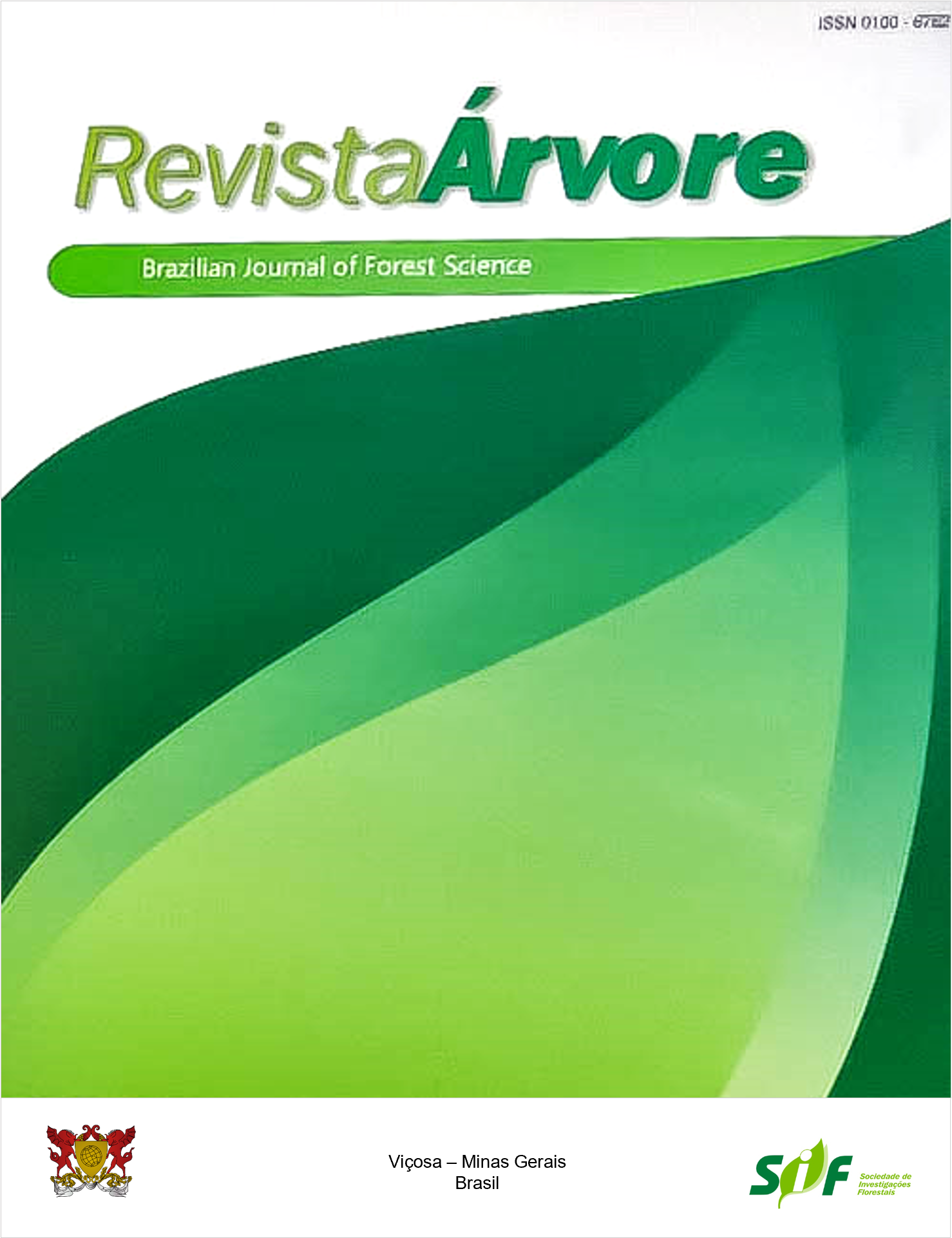EFFECT OF TRAFFIC INTENSITIES OF A DIRECTIONAL FELLER AND SKIDDER ON THE COMPACTION OF A BRUNO NITISOL
Keywords:
Mechanized harvest, Forest soils, Physical attributesAbstract
This study evaluated the compaction of a Bruno Nitisol caused by traffic intensities by a directional feller and skidder used to wood harvesting in a Pinus taeda stand. Data were collected at a forest company located in Parana State, Brazil. Samples were performed using an installation of four blocks (30 × 15 m) with subdivided plots and the treatments included a combination of five traffic simulations of directional feller and skidder machines, with the simulations performed in the plots at four soil depths, referred to as subplots. Compaction was evaluated by soil density, total porosity, microporosity, and macroporosity. The data were submitted to analysis of variance and the means were compared with the Tukey test at a 5% level of significance. Linear regression equations were also adjusted to represent the relation between traffic intensity, depth, and the variable of interest. The results showed that machine traffic caused higher compaction of the superficial soil layers, resulting in a 14.6% increase in soil density compared to the soil subjected to no machine traffic. The increase in traffic intensity of the skidder tractor reduced macroporosity by 62.5% and 53.8% at depths of 0-10 and 10-20 cm, respectively. Dragging of the logs by the skidder tractor increased soil compaction due to the several trips by the machine in a single line.
Keywords: Mechanized harvest; Forest soils; Physical attributes
Downloads
Published
How to Cite
Issue
Section
License
Copyright (c) 2019 Revista Árvore

This work is licensed under a Creative Commons Attribution 4.0 International License.
All authors agreed to submit the work to Revista Árvore and granted the exclusive license to publish the article. The authors affirm that it is an original work and has not been previously published elsewhere. The scientific content and opinions expressed in the article are the sole responsibility of the authors and reflect their opinions, not necessarily representing the opinions of the editorial board of Revista Árvore or of the Society of Forest Investigations (SIF).




